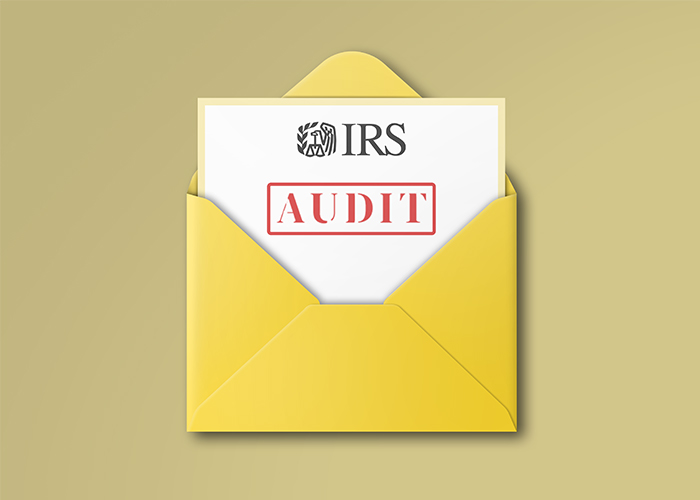What compels businesses to conduct an ‘audit financial statement’, and how does it safeguard financial veracity? This article breaks down the process – from rigorous examination to the affirmation of accuracy, offering a clear pathway through the complex world of financial statement audits. Understand the pivotal role these audits play in ensuring a transparent financial landscape, and what it could mean for stakeholders and decision-makers.
Key Takeaways
- Audits are investigations into a company’s financial statements performed by CPAs to ensure accuracy, providing stakeholders like investors and regulators with confidence in the company’s reported financial health.
- The audit process involves examining internal controls, assessing risks, and conducting substantive procedures to verify financial statement accuracy, with a focus on compliance with GAAP or IFRS.
- Technological advancements such as audit automation software and computer-assisted audit tools are enhancing the efficiency and effectiveness of audits, although human judgment remains indispensable.
Deciphering the Audit Financial Statement

Picture an audit financial statement as a detective’s report, objectively examining the company’s financial records to ensure they accurately reflect its transactions. The audit process involves several tests, akin to clues in a detective’s toolkit, assessing the accuracy of the balance sheet, income statement, and cash flow statement, to verify the financial position of the company.
Yet, like any investigation, audits have their limitations. They rely on sampling and professional judgment to identify material misstatements, not unlike a detective relying on evidence and intuition to solve a case. These audits are performed by certified public accountants (CPAs), independent of the company being audited, ensuring an unbiased review, much like a neutral detective on the case.
Essence of Audited Financial Statements
Business transparency heavily relies on audited financial statements. They instill credibility and confidence among external stakeholders, including investors, lenders, and regulatory bodies, by affirming that the company’s financial information is accurately reported and the financial statements present fairly. Imagine a high-stakes poker game. The audited financial statements are like the dealer’s assurance that the deck of cards is not rigged.
Shareholders, among other stakeholders, depend on audited financial statements to guide their key decisions. These documents provide insights into a company’s:
- revenue
- expenses
- profitability
- debt levels
They serve as a roadmap to the company’s financial health and are an essential tool, offering a comprehensive snapshot that informs investment decisions.
The accuracy and completeness of accounting data provided through audits facilitate financial ratio analysis, allowing comparisons of a company’s financial performance over time and against competitors.
The Audit Trail
An audit trail can be compared to the breadcrumbs left by Hansel and Gretel in the famous fairy tale. It is essential for:
- Tracking user activities
- Tracking financial statement amounts back to the original transaction source
- Forming a sequence of events that validates business transactions.
During the audit, auditors must gain an in-depth understanding of a client’s information system and business processes relevant to financial reporting, much like detectives understanding the modus operandi of a case. The process involves checking the accuracy and validity of transactions within the income statement and verifying assets and liabilities on the balance sheet to confirm compliance with accounting standards, including international auditing practices.
An audit trail, thus, aids auditors in ensuring that all financial transactions are recorded accurately and completely, adhering to Generally Accepted Accounting Principles (GAAP) or International Financial Reporting Standards (IFRS).
The Pillars of Financial Audits

Financial audits, similar to a building’s pillars, depend on certain key elements for their robustness and reliability. These pillars include internal controls testing, risk assessment, and substantive procedures, each contributing to the overall structure and integrity of the audit.
Imagine an auditor as a seasoned architect. Internal controls testing involves evaluating the entity’s controls, focusing on areas such as authorization, safeguarding of assets, and segregation of duties, much like an architect assessing the structural integrity of a building’s pillars. Risk assessment is a critical part of this process, similar to evaluating the potential threats to the building, such as earthquakes or floods. Depending on the effectiveness of these internal controls, auditors may alter the extent of detailed audit procedures, leading to potential cost savings.
Conversely, if internal controls are found to be ineffective, auditors are compelled to perform additional procedures to scrutinize the financial statements, akin to an architect ordering additional tests if the building’s pillars are found to be unstable.
The last pillar, substantive procedures, includes:
- reviewing bank reconciliations
- conducting ratio comparisons
- observing inventory counts
- confirming receivables and payables
All of these procedures are essential for gathering evidence during the audit.
Scrutinizing Internal Controls
The effectiveness of internal controls is to the reliability of financial statements what the quality of pillars is to a building’s strength. These controls are fundamental in producing reliable financial statements, significantly affecting the quality of an audit and are crucial for investor decision-making.
However, auditing internal controls is not without its challenges. Auditors must assess both manual and automated controls, including IT general controls, considering factors such as materiality, risk, and the company’s legal and regulatory environment.
These controls are adapted to the size, complexity, and nature of the client’s operations.
Risk Assessment in Auditing
Auditors conduct a thorough risk assessment process, analogous to an architect evaluating potential threats to a building’s structure. This process begins with a planning phase that provides an initial understanding of potential financial statement risks.
It is critical for auditors to have a prepared and adaptive approach to risk assessment to ensure the quality of the audit remains high throughout the audit process, much like an architect adapting their designs to accommodate potential threats. A comprehensive understanding of the company’s flow of transactions is vital for determining the complete range of risks, spanning fraud risk and other financial reporting inaccuracies.
The risk assessment procedures are geared towards understanding the entity and its environment, which encompasses business operations, the market in which it operates, and its internal control. This assessment, undertaken at the assertion level, is specifically meant to map out the risk of material misstatement, shaping the nature, timing, and scope of the subsequent audit tasks.
The Anatomy of an Audited Financial Statement

The main components of audited financial statements include:
- Balance sheet
- Income statement
- Statement of changes in equity
- Cash flow statement
Each of these components reveals different aspects of the company’s financial health and performance.
Consider the balance sheet as the foundation, reporting a company’s financial position at a specific point in time, which includes assets, liabilities, and equity. The income statement is like the building’s facade, showing the company’s performance during the fiscal year, including revenue earned, expenses incurred, and net profit or loss.
The statement of changes in equity details the movements in a company’s equity over the accounting period, much like a building’s structural alterations over time. Lastly, the cash flow statement, akin to the building’s utilities, reflects the company’s ability to meet short-term obligations by examining cash inflows and outflows during the fiscal year.
Balance Sheet Verification
Similar to a building’s foundation, the balance sheet must be robust and accurate. The auditor’s verification process includes examining a company’s assets, liabilities, and equity positions, shedding light on the company’s overall financial health for stakeholders.
Verifying the existence of assets and liabilities, along with the accuracy of the figures presented, is a fundamental part of the balance sheet audit process, much like evaluating the strength and integrity of a building’s foundation. Just like how building blueprints place elements in order of their structural significance, balance sheet items are presented in order of liquidity, with the most liquid assets and immediate liabilities placed at the forefront.
Income Statement Examination
The income statement offers a snapshot of the company’s performance, analogous to a building’s facade. Auditors examine the income statement to ensure accurate reporting of revenue, expenses, and net profit or loss. Auditors verify the accuracy of transactions by cross-checking the cash book and individual books of accounts to ensure all revenue and expenses are recorded and classified correctly, just as a building inspector would cross-check the facade’s measurements and materials.
They begin examining the income statement by verifying the summary calculations, ensuring total revenue and expense amounts match the sum of their respective line items, much like ensuring the facade’s elements align with the building’s blueprint. With the rise of technology, the use of audit data analytics improves the effectiveness of an audit by testing entire populations of data, much like using state-of-the-art tools to inspect a building’s facade.
Cash Flow Analysis
The cash flow statement, comparable to a building’s utilities, gives crucial insights into the company’s operational efficiency. It shows how effectively the company generates cash, much like how utility systems demonstrate the efficiency of a building’s operations.
Analyzing the cash flow statement helps gauge the company’s liquidity, reflecting its ability to use short-term assets to cover short-term liabilities, similar to assessing a building’s utility systems to ensure they meet the building’s needs.
Auditing the cash flow statement is vital for ascertaining the company’s capability to meet its short-term obligations and sustain operations in the long term, just like ensuring a building’s utilities are sufficient to support its long-term functioning.
The Auditor’s Report: Beyond the Numbers

Think of the auditor’s report as the ultimate endorsement of a building project. An audit opinion letter provides an unbiased assessment of a company’s financial statements, indicating their accuracy and compliance with accounting standards.
The purpose of an audit opinion letter is to state the auditor’s opinion on the fair representation of the financial statements, just as a building inspector’s final report states their opinion on the building’s safety and compliance with regulations. An unqualified or unmodified opinion indicates that the financial statements present the company’s financial position and results fairly, without any material misstatements, much like an inspector’s approval without reservations.
Companies anticipate receiving an unqualified opinion as it signifies satisfaction with the financial reporting and compliance with governance and laws, similar to a building owner’s satisfaction with a positive inspection report. However, there are other types of opinions, such as:
- Qualified opinion: indicates that there are limitations or exceptions to the financial statements, but overall they are fairly presented.
- Adverse opinion: indicates that the financial statements are not fairly presented and do not comply with accounting standards.
- Disclaimer of opinion: indicates that the auditor is unable to express an opinion on the financial statements.
Each type of opinion has significant implications for the company, much like varying inspection results for a building.
Publicly Traded Companies vs. Private Entities
The audit requirements for publicly traded companies contrast with those for private entities, much like the differing regulations for skyscrapers and single-family homes. Publicly traded companies are required to have their financial statements audited by the Securities and Exchange Commission (SEC), while private companies without publicly traded debt or equity are not legally required to undergo such audits.
For public companies, audits are regulated by the Public Company Accounting Oversight Board (PCAOB) and must comply with the auditing standards it sets, just as skyscraper construction must comply with rigorous building codes and safety standards. On the other hand, private companies may choose to perform review engagements or compilations in cases where an audit is not mandatory, offering limited or no assurance, much like a homeowner may choose to undertake a home inspection or not.
Both public and private companies must adhere to Generally Accepted Accounting Principles (GAAP), but it is a requirement imposed by the SEC for public companies, whereas private companies do so to meet the expectations of other stakeholders like lenders and insurers.
Lastly, the role of external auditors in public companies is emphasized by legal requirements, whereas for private entities, external audits are not always legally required but can be essential for assessing financial health or may be needed by lenders or investors.
Navigating the Audit Process
The complexity of navigating the audit process can be likened to navigating a building’s construction process. The audit involves three essential stages: planning and risk assessment, internal controls testing, and substantive testing, all of which contribute to forming the auditor’s opinion.
The planning stage, akin to the initial blueprint drafting for a building, involves gaining a thorough understanding of the client’s business, industry, and transactions to identify risks and apply professional skepticism, particularly regarding the potential for material misstatement due to fraud. This is followed by the internal controls testing stage, much like the inspection of a building’s structural integrity, where auditors assess the design and implementation of internal controls.
Collaboration Between Auditors and Company Management
Open communication and collaboration between all parties involved is as essential to a successful audit as it is to a successful building project. Building a good relationship between control owners, internal auditors, and external auditors through open communication is essential for a collaborative audit culture.
Regularly scheduled touchpoints, much like regular construction meetings, are recommended for audit teams and management to discuss significant changes and share regulatory and industry insights. Auditors, like construction managers, need to be adaptable, working closely with control owners to understand and resolve issues, enhancing collaboration.
Enhancing Business Practices Through Financial Statement Audits
A well-conducted financial statement audit can enhance a company’s business practices, much like a well-constructed building uplifts its surroundings. Financial statement audits provide suggestions for operational efficiency enhancements and may recommend more effective accounting operations.
Much like a building inspector might suggest improvements to a building’s design or construction methods, auditors suggest improvements to a company’s control environment to reduce fraud and errors through internal audits. Reliable information from audited financial statements aids in data-driven decision-making and strategic business planning, much like accurate blueprints and inspection reports aid in a building’s future maintenance and utilization.
Financial statement audits build trust with various stakeholders by ensuring the accountability and accuracy of financial reports, much like a positive inspection report builds trust in a building’s safety. With the rise of technology, audits are becoming more efficient and relevant, much like the construction industry’s adoption of new technologies.
Auditing in the Digital Age

As technology has revolutionized the world of construction, it is also transforming the auditing landscape. Advancements such as audit automation software and computer-assisted audit tools are transforming the audit process and enhancing efficiency.
Audit automation software, like advanced construction software, consolidates financial data from various sources, allowing auditors to analyze large volumes of information efficiently. Yet, despite these technological advancements, human evaluation, analysis, and judgment retain their critical role in auditing, much like the essential role of skilled workers in a construction project.
Adopting new technology in auditing can be a multi-year journey, facing challenges such as the time needed for implementation and compensation structures not always rewarding innovation efforts, similar to the challenges faced in adopting new construction technologies. The integration of technology in audit processes, like in construction processes, enhances security and supports a collaborative culture by streamlining compliance processes.
Summary
Just as we reach the end of a building tour, we’ve reached the end of our exploration of the audit financial statement process. We’ve unraveled the complexities of audited financial statements, delved into the pillars of financial audits, examined the anatomy of an audited financial statement, and even navigated the audit process. We’ve seen how audits differ for publicly traded companies and private entities, and how audits can enhance business practices. Finally, we’ve looked at how technology is transforming the auditing landscape.
As we conclude, let’s remember that audited financial statements are more than just numbers on a page. They’re a reflection of a company’s financial health, a beacon of transparency, and a tool for informed decision-making. They’re the result of a meticulous process involving planning, risk assessment, internal controls testing, and substantive testing. And just like a well-constructed building, a well-conducted audit stands as a testament to accuracy, integrity, and trust.
Frequently Asked Questions
What are the 4 audited financial statements?
The 4 audited financial statements are the balance sheet, income statement, statement of cash flow, and statement of changes in equity, and they are often audited by government agencies and accountants for accuracy and compliance.
Who is required to have audited financial statements?
Any public company is required to have audited financial statements by a registered CPA, while any business presenting financials to investors or lenders should also prepare audited financial statements. This ensures transparency and compliance with regulations.
What is the difference between audited financial statement and balance sheet?
The balance sheet provides a snapshot of a company’s assets and liabilities, while a financial statement tracks the financial activities of the business, offering more comprehensive information.
Why should financial statements be audited by a CPA?
Financial statements should be audited by a CPA because banks, creditors, and outside investors often require the assurance provided by an auditor’s opinion. Additionally, audits are a best practice before selling a company to ensure that the financial information is materially accurate and can withstand due diligence.
What are the main components of audited financial statements?
The main components of audited financial statements are the balance sheet, income statement, statement of changes in equity, and cash flow statement. These components provide a comprehensive overview of a company’s financial position and performance.




